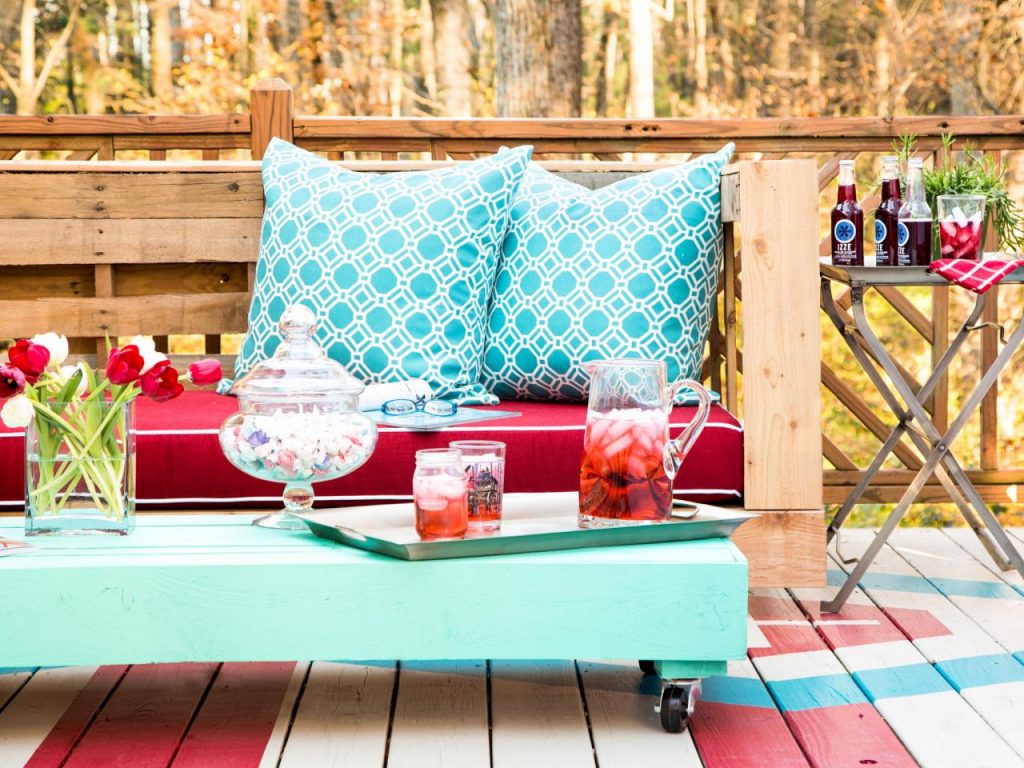23 Immergrüne Sträucher - Entdecken Sie die Schönsten Immergrünen Sträucher
Immergrüne Sträucher gehören zu den am meisten geschätzten Pflanzen unter Gärtnern. Ihre Beliebtheit resultiert aus der Tatsache, dass sie das ganze Jahr über eine schöne Gartendekoration bleiben - kein Wetter kann sie gefährden. Das bedeutet aber nicht, dass alle immergrünen Sträucher gleich aussehen. Sie unterscheiden sich in Größe und Farbe. Einige haben Blätter, andere Nadeln. Schauen Sie sich die schönsten immergrünen Sträucher an, und wählen Sie die besten Pflanzen für Ihren Garten aus.

Schnell wachsende immergrüne Sträucher
Wenn Ihr Garten groß ist und Sie auf der Suche nach einer schnellen und vor allem schönen Bepflanzung sind, können Sie mit schnell wachsenden immergrünen Sträuchern nichts falsch machen. Dank ihnen können Sie schon nach 2 Jahren sehr interessant aussehende Pflanzen in Ihrem Garten erwarten.
Gärtner wählen verschiedene schnell wachsende immergrüne Sträucher aus. Vieles hängt von den individuellen Vorlieben, der Struktur des Gartens und den Bedingungen ab, aber bestimmte immergrüne Sträucher sind sehr beliebt. Werfen Sie einen Blick auf die beiden folgenden Arten: Oregon-Traube und Koreanischer Liguster.
Oregon-Traube (Mahonia aquifolium)
Die Oregon-Traube ist ein immergrüner Strauch, der während der Blütezeit durch seinen sinnlichen Duft besticht. Er trägt auch Früchte, aus denen man schmackhafte und gesunde Konserven herstellen kann. Der Strauch hat lange Zweige, die gelbe Blüten entwickeln.
Der Strauch ist völlig frostbeständig. Außerdem wächst er auch im Sommer perfekt, sogar während langer Dürreperioden. Er benötigt keine besondere Pflege und ist resistent gegen Schädlinge. Ein Rückschnitt einmal im Jahr im Mai ist jedoch empfehlenswert. Sie können die Pflanze auch mit geeigneten Düngemitteln stärken.
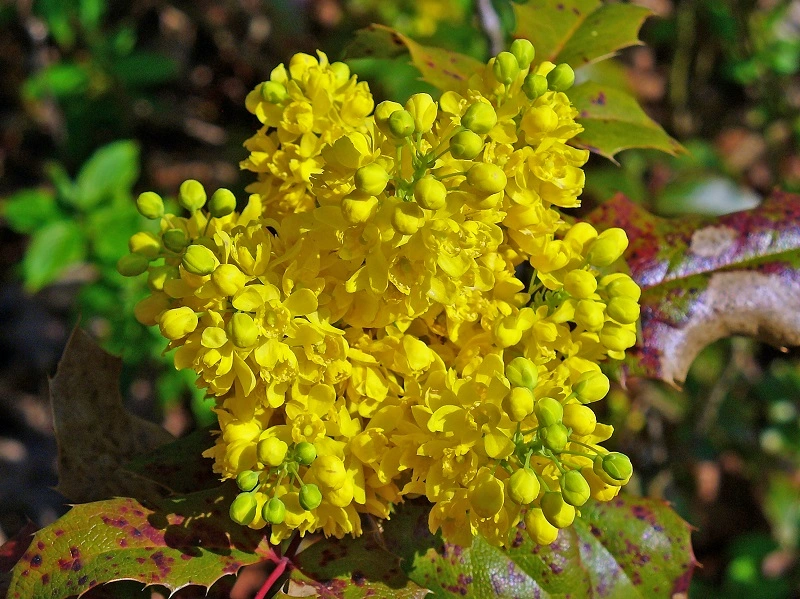
Koreanischer Liguster (Ligustr ovalifolium)
Der Koreanische Liguster ist auch als ovalblättriger Liguster bekannt. Der Strauch wird nicht höher als 2 Meter. Dieser immergrüne Strauch hat, wie sein Name schon sagt, charakteristische runde Blätter. Wenn er blüht, entwickelt er kleine, leuchtende, wollige Blüten. Er trägt auch Früchte, die man aber nicht pflücken sollte, da sie für den Menschen ungenießbar sind.
Wissenswertes: Der koreanische Liguster gehört zu den beliebtesten Sträuchern, die zu Strauchskulpturen geformt werden. Daher ist er häufig in Stadtparks und auf Plätzen anzutreffen.

Langsam wachsende immergrüne Sträucher
Sie haben einen kleinen Garten, möchten aber keine Stauden oder Ziergräser anbauen? Sie müssen nicht auf Sträucher verzichten - wählen Sie einfach langsam wachsende immergrüne Sträucher. Einige von ihnen brauchen sogar 10 Jahre, um bis zu 1 Meter hoch zu werden. Außerdem können Sie sie regelmäßig beschneiden, um sicherzustellen, dass sie nicht zu viel Platz in Ihrem Garten einnehmen.
Weißfichte ‘Conica’ (Picea glauca ‘Conica’)
Die Weißfichte ‘Conica’ ist eine der beliebtesten Arten innerhalb ihrer Familie. Sie wächst sehr langsam, was sie zu einer perfekten Pflanze für kleine Gärten macht. Der jährliche Zuwachs übersteigt nicht 10 cm (3.94 in). Charakteristisch sind ihr kegelförmiger Wuchs und die kleinen, dicken Äste.
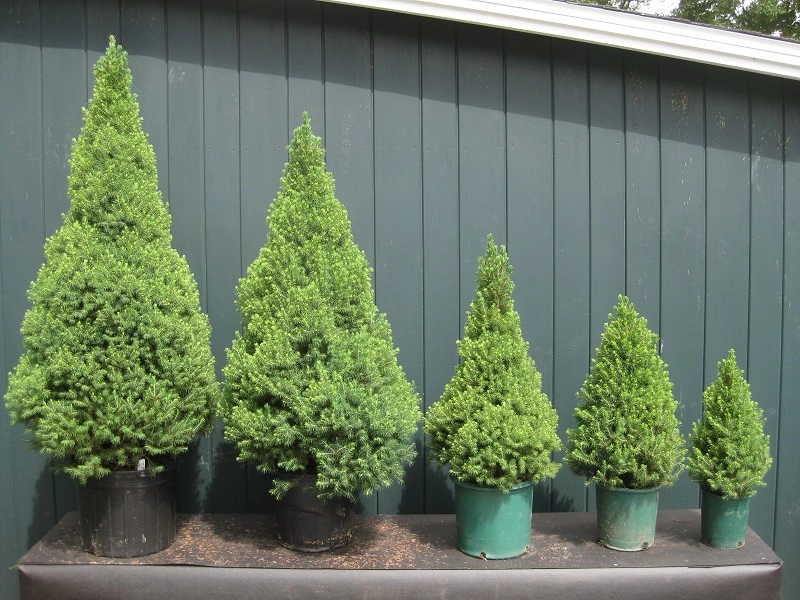
Nördliche Weißzeder (Wareana Lutescens)
Die Nördliche Weißzeder ist der den meisten Menschen bekannte Thuja-Baum. Die maximale Höhe dieses beliebten immergrünen Strauches beträgt in der Regel nicht mehr als 3 Meter, was nach 20-25 Jahren nach der Pflanzung erreicht wird. Man kann die Pflanze auch regelmäßig beschneiden, um ihre Höhe zu begrenzen.
Northern white-cedar is not a difficult shrub. All it needs is slightly acidic soil and a sunny location.

Kleine immergrüne Sträucher
Kurze immergrüne Sträucher sind ideal für kleine Gärten, aber nicht nur. Sie sind auch ideal für Menschen, die keine Lust auf zu große Bäume haben. Sie sind beliebt, weil es sie in vielen Sorten gibt, was Ihnen fast unbegrenzte Möglichkeiten bietet. Sie können zwischen Ziergehölzen mit interessant aussehenden Blättern, Nadelgehölzen oder blühenden Sorten wählen.
Gewöhnlicher Buchsbaum (Buxus sempervirens)
Der Buchsbaum ist eine Pflanze, die viele mit Festtagen verbinden, z. B. Ostern. In den osteuropäischen Ländern wird er häufig als Dekoration für Osterkörbe verwendet. Wegen seiner Frostbeständigkeit ist er ein beliebter Strauch für Hecken. Leider ist Buchsbaum ein immergrüner Strauch, der regelmäßig gepflegt und mit speziellen Düngemitteln gestärkt werden muss, da er anfällig für verschiedene Schädlinge ist.
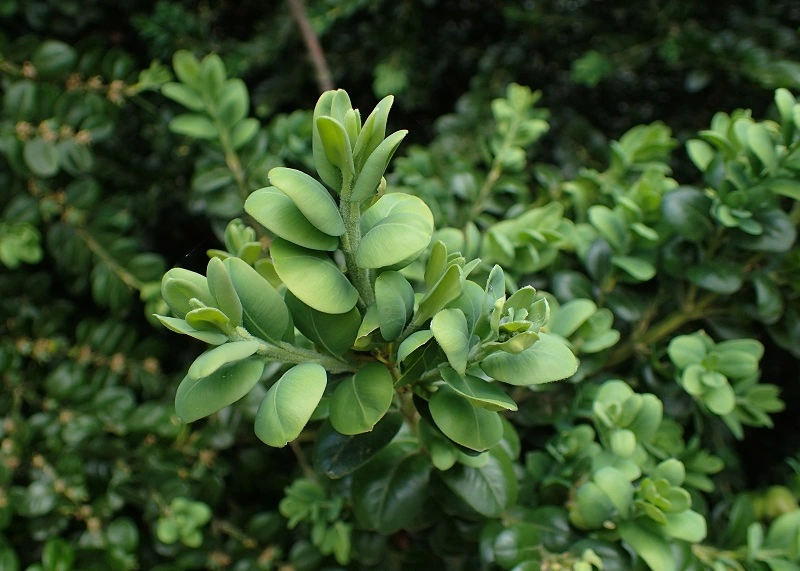
Japanische Andromeda (Pieris japonica)
Die Japanische Andromeda wird oft mit der Azalee verglichen. Es stimmt, dass beide zur gleichen Pflanzengruppe gehören - den Ericaceae. Dieser immergrüne Strauch zeichnet sich durch seine geringe Wuchshöhe aus, da er nicht höher als 1 Meter wird. Aber diese Art ist nicht für jeden Garten geeignet. Sie benötigt einen sonnigen oder halbschattigen Standort. Außerdem sollte sie vor Wind geschützt werden. Der Boden muss leicht sauer sein und mit Torf gemischt werden.
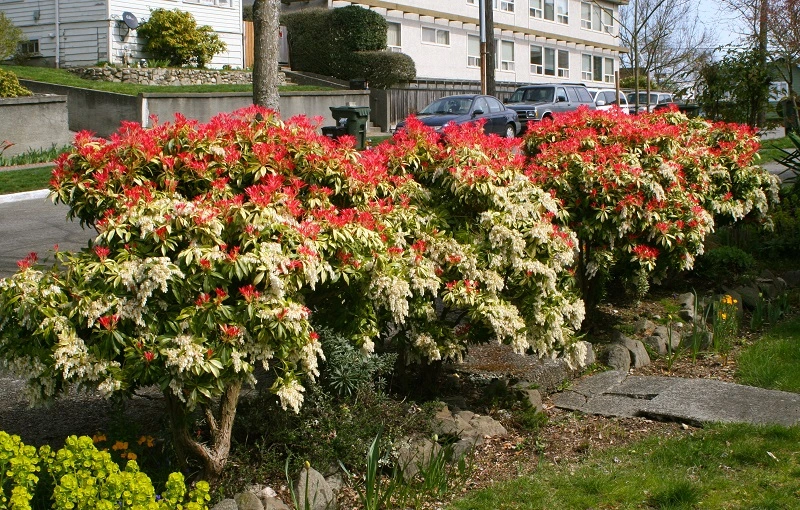
Schaf-Lorbeer (Kalmia angustifolia)
Der Schafslorbeer ist ein schöner, farbenfroher Strauch, der bis zu 1 m hoch wird. Er zeichnet sich durch seine geringen Ansprüche aus. Der Boden sollte leicht sauer und konstant feucht sein. Der Strauch ist sehr widerstandsfähig gegen Frost, was besonders im Winter von Bedeutung ist.
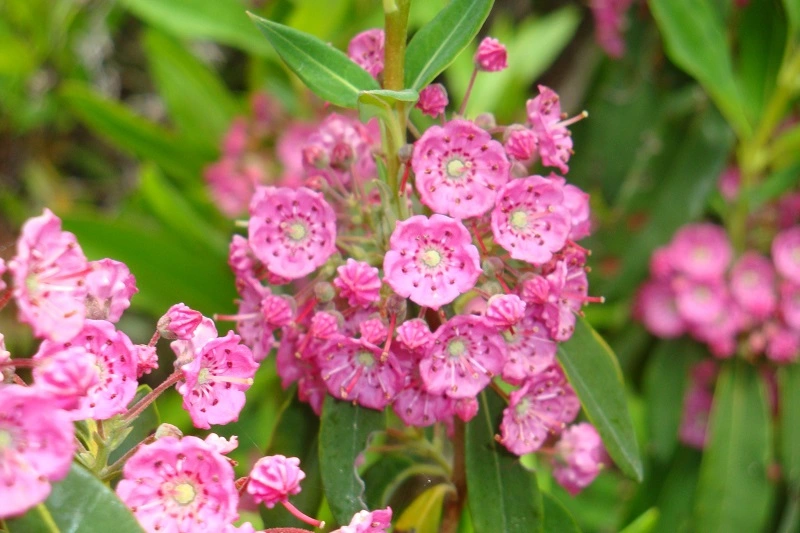
Große immergrüne Sträucher
Hohe immergrüne Sträucher sind ideal für große Gärten, aber nicht nur. Nicht alle von ihnen haben einen breiten Wuchs. Wenn Sie sich für schlanke Ziersträucher entscheiden, können Sie mit ihnen einen kleinen Garten verschönern und etwas Privatsphäre vor Nachbarn und Verkehr haben. Auch breite, immergrüne Sträucher können in kleinen Gärten gepflanzt werden - sie müssen nur regelmäßig zurückgeschnitten werden.
Leatherleaf viburnum (Viburnum rhytidophyllum)
Der Viburnum rhytidophyllum ist einer der höchsten immergrünen Sträucher, die man im Garten finden kann. Die Pflanze wird in der Regel bis zu 3 Meter hoch, ist aber auch recht breit. Sie hat charakteristische große Blätter, die in der Regel 17-18 cm lang sind. Auch die bescheidenen, aber schönen cremefarbenen Blüten sind bemerkenswert.
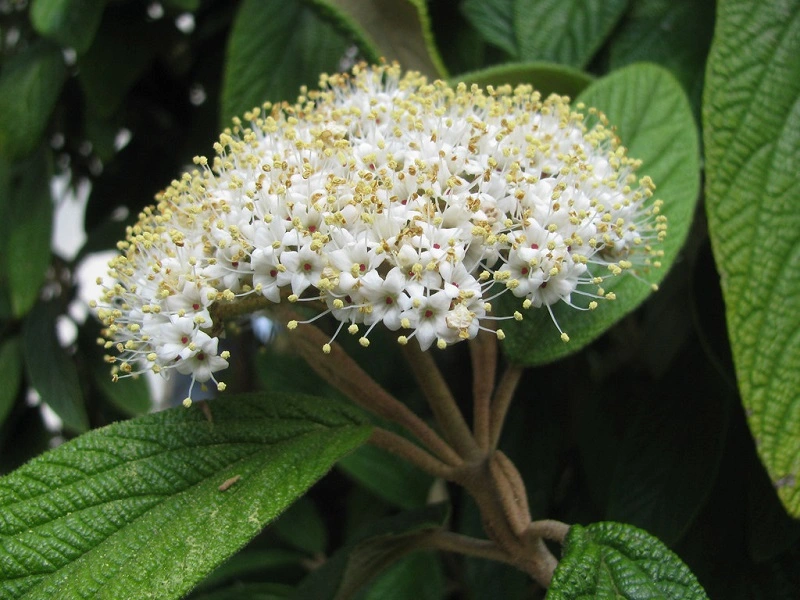
Tamariske (Tamarix L.)
Die Tamarisk ist ein immergrüner Strauch mit vielen Sorten. Jede von ihnen ist resistent gegen niedrige Temperaturen, Trockenheit und Verschmutzung. Aus diesem Grund findet man Tamarisken nicht nur in Gärten, sondern auch in großen Stadtparks.
Tamarisk wächst am besten an sonnigen Standorten. Dort blüht sie auch am schönsten. Sie entwickelt im Sommer prächtige rosa oder weiße Blüten. Auch im Herbst überrascht der Strauch, wenn er sich gelb färbt.
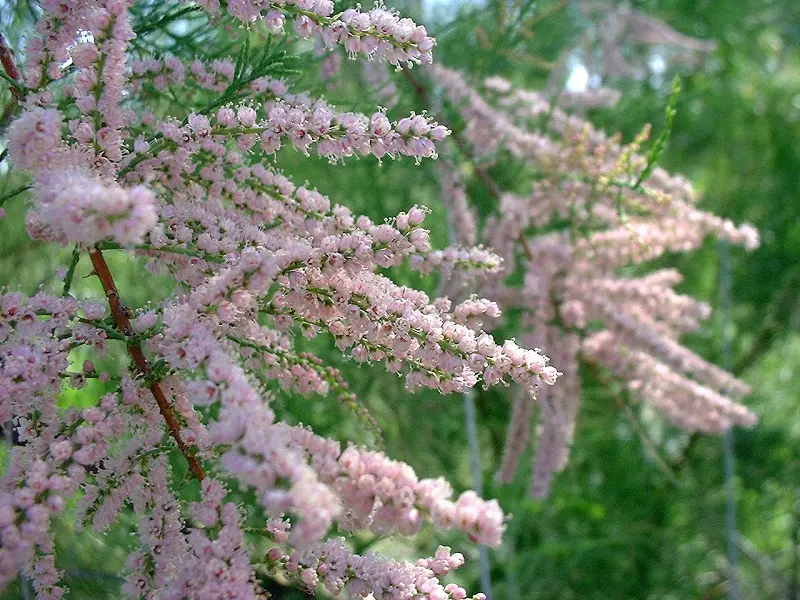
Blühende immergrüne Sträucher
Die meisten Menschen denken bei immergrünen Sträuchern an Laub- oder Nadelgehölze. Beachten Sie aber, dass einige von ihnen blühen, vor allem im Frühjahr und Sommer. Solche Arten sind die perfekte Wahl, wenn Sie Farben in Ihrem Garten lieben, aber keine Zeit für die Pflege von Blumen haben, die definitiv zeitaufwändiger sind. Es gibt viele blühende immergrüne Sträucher, wobei bestimmte Arten beliebter sind als andere.
Kirschlorbeer (Prunus laurocerasus)
Der Kirschlorbeer ist ein sehr eleganter, immergrüner Strauch, der sich für Pflanzenarrangements und als Hecke eignet. Der jährliche Wuchs beträgt in der Regel 50 cm, hängt aber von den jeweiligen Bedingungen und dem Standort ab, an dem er gepflanzt wird. Der Kirschlorbeer zeichnet sich durch seine Langlebigkeit und seine schönen Blüten aus.
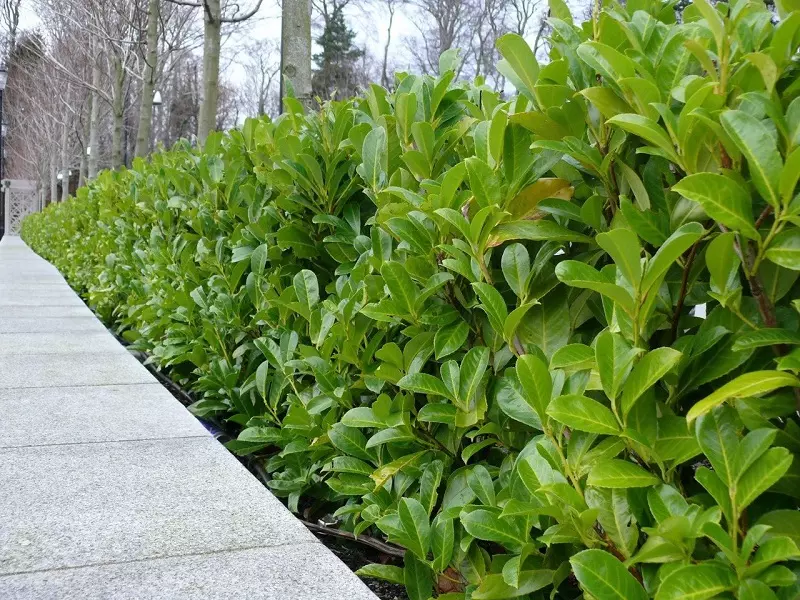
Rhododendron (Rhododendron)
Der Rhododendron ist einer der schönsten Gartensträucher. Sein Wuchs ist dicht und hoch. Diese Pflanzen können bis zu 2,5 Meter hoch werden. Sie sind außerdem leicht zu kultivieren. Sie brauchen einen durchlässigen, leicht sauren und mäßig feuchten Boden. Zu den Vorteilen von Rhododendren gehören ihre Widerstandsfähigkeit gegen niedrige Temperaturen und eine große Vielfalt an Blütenfarben.
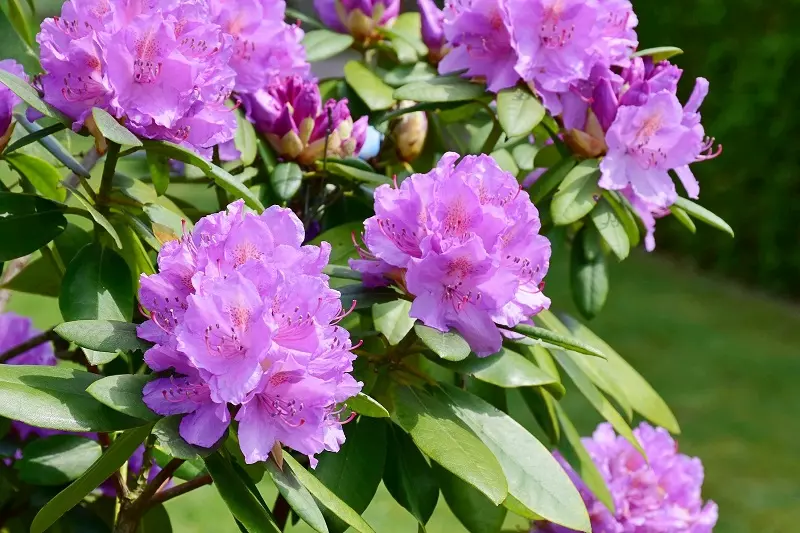
Immergrüne Laubgehölze
Immergrüne Laubgehölze sind eine der beliebtesten Pflanzenarten in Gärten. Sie sind sehr universell einsetzbar und passen daher sowohl in Gärten im französischen Stil als auch in Gärten im englischen Stil. Die meisten von ihnen sind nicht sehr anspruchsvoll. Sie brauchen nur einen guten Boden und eine geringe Pflege, die auch für Gartenanfänger einfach ist.
Glücksspindel (Euonymus fortunei)
Die Glücksspindel ist ein kleiner immergrüner Strauch. Seine Höhe übersteigt unter guten Bedingungen nicht 60 cm. Er hat charakteristische, dekorative Blätter. Sie sind zweifarbig - die Mitte ist grün, die Ränder sind weiß. Interessanterweise sind diese Pflanzen nicht nur für Gärten geeignet, sondern können auch in Töpfen auf Balkonen und Terrassen angebaut werden.
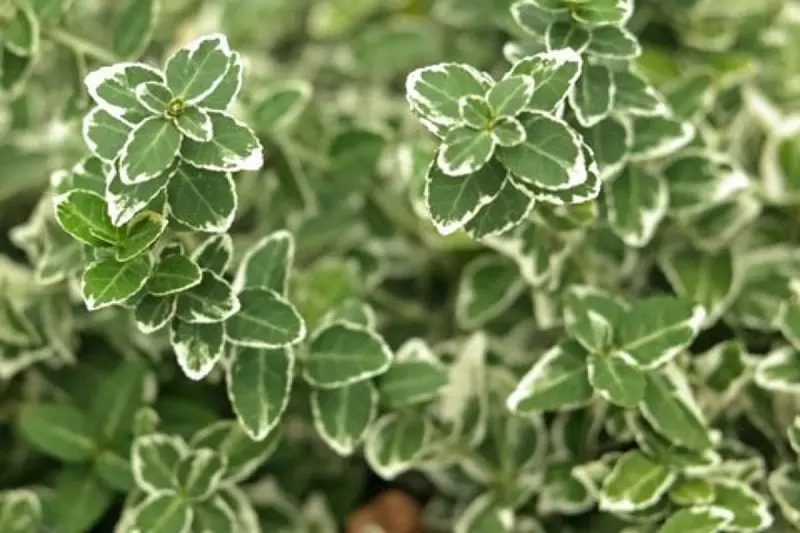
Gaulteria (Gaultheria procumbens)
Die Gaultheria procumbens ist ein immergrüner Strauch, der sich vor allem durch seine dekorativen roten Früchte auszeichnet. Interessanterweise gehört diese Pflanze zur Gruppe der Erika-Sträucher und wird nicht höher als 15-20 cm. Dadurch ist sie perfekt für kleine Gärten geeignet.

Immergrüne Nadelbaumsträucher
Immergrüne Nadelgehölze sind die Grundlage eines jeden Waldgartens. Das bedeutet aber nicht, dass man sie nur in Gärten mit einem solchen Design pflanzen kann. Immergrüne Nadelgehölze sehen in Kombination mit modernen Gebäuden, die etwas kahl wirken, wunderschön aus. Sie passen auch zu alten Holzhäusern, wie sie in Gebirgsregionen häufig zu sehen sind.
Gebirgstanne (Abies lasiocarpa ‘Compacta’)
Die Rocky mountain fir ist ein kurzer, langsam wachsender Nadelstrauch. Sie ist recht schwierig zu kultivieren, da sie einen reichen und feuchten Boden benötigt. Sie sollte an sonnigen Standorten oder im Halbschatten gepflanzt werden. Junge Sträucher müssen vor dem Winter gesichert werden, da der Frost sie beschädigen könnte.
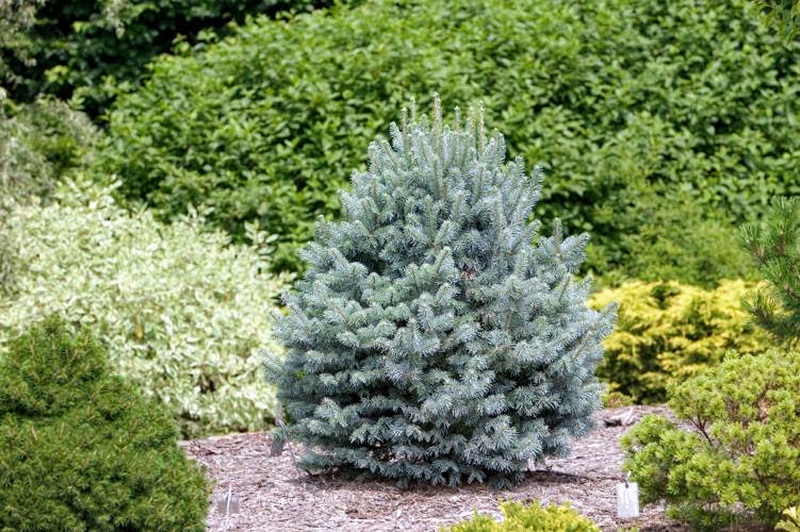
Östlicher Schierling (Tsuga canadensis ‘Jedeloh’)
Der Östliche Schierling ist ein sehr charakteristischer, immergrüner Strauch, der eine eigentümlich abgeflachte und kuppelförmige Form hat. Er wächst nicht sehr hoch, denn er erreicht typischerweise eine Höhe von 1 m. Aber er ist ziemlich anspruchsvoll. Obwohl der Östliche Schierling gegen niedrige Temperaturen resistent ist, verträgt er Dürreperioden schlecht. Schon wenige Tage ohne Wasser können sein Absterben zur Folge haben.
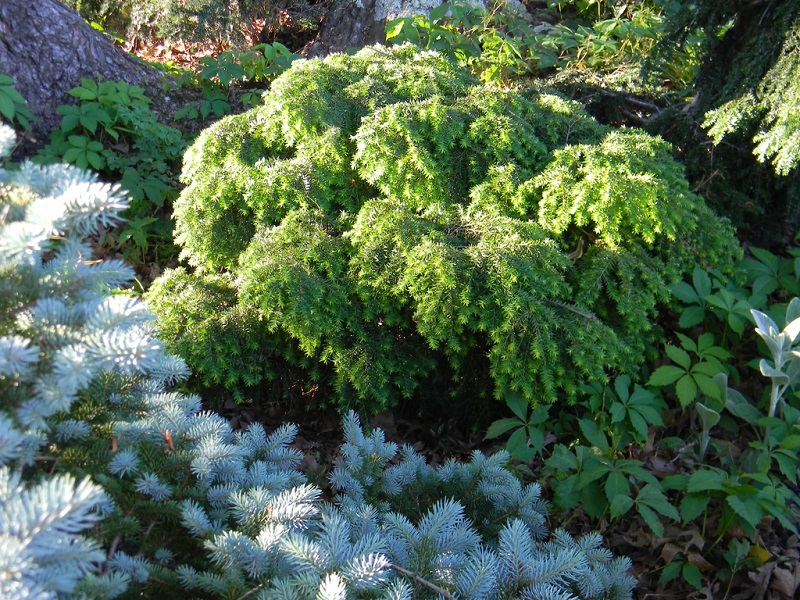
Immergrüne Sträucher in runder Form
Sind Sie auf der Suche nach einzigartigen Sträuchern, die auch im Winter gut aussehen? Wählen Sie runde Pflanzen - sie sehen wirklich elegant aus. Beachten Sie dass sie mehr Aufmerksamkeit benötigen, vor allem wenn es um den Rückschnitt geht. Aber diese Pflege nimmt nicht allzu viel Zeit in Anspruch. Viele Menschen entscheiden sich gegen den Kauf von immergrünen Rundsträuchern, weil sie denken, sie seien teuer. Aber wie sich herausstellt, ist das nicht wahr. Die Preise für solche Rundsträucher liegen nahe bei denen anderer Pflanzen.
Moorkiefer ‘Mops’ (Pinus mugo ‘Mops’)
Die Moorkiefer ‘Mops’ ist ein immergrüner Strauch mit dichten Nadeln, der eine runde Form annimmt. Die Nadeln sind lang und sehr steif. Anfänger werden die kleine Pflanze zu schätzen wissen - sie ist ein pflegeleichter, immergrüner Strauch. Ein sonniger Standort ist der einzige wichtige Aspekt seiner Pflege. Bodenbeschaffenheit und Feuchtigkeit spielen keine Rolle.

Arbovitae ‘Danica’ (Thuja occidentalis ‘Danica’)
Arbovitae ‘Danica’ ist eine beliebte Thuja, die sich durch ihren runden Wuchs und ihr langsames Wachstum auszeichnet. Die Zweige sind dick und dicht gepackt. Außerdem sind sie relativ kurz, was das Formen in die charakteristische Form erleichtert. Geringe Bodenansprüche sind ein großes Plus dieser Pflanze.
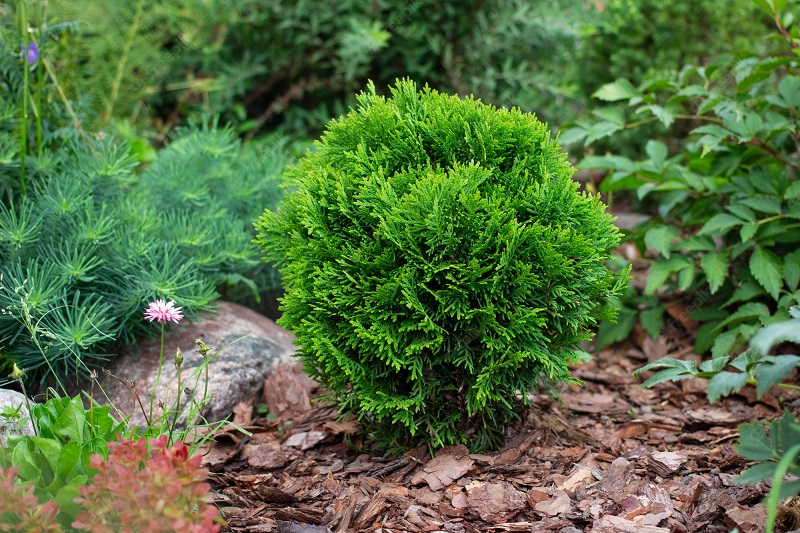
Arbovitae ‘Mirjam’ (Thuja occidentalis ‘Mirjam’)
Arbovitae ‘Mirjam’ ist ein weiterer beliebter immergrüner Nadelstrauch mit rundem Wuchs und langsamem Wachstum. Er unterscheidet sich von der oben genannten Sorte ‘Danica’ vor allem durch die goldene Farbe. Sie ist eine sehr tolerante Sorte, d. h. Sie können sie in praktisch jeden Boden pflanzen - obwohl ein nährstoffreicher und durchlässiger Boden für diese Pflanze definitiv am besten ist.

Anhängende immergrüne Sträucher
Wer seinen Garten modern gestalten möchte, wird sich über immergrüne Sträucher freuen, die das ganze Jahr über grün bleiben. Sie wachsen nicht zu hoch und ziehen sich an der Oberfläche entlang. Dank ihnen sieht der Garten sehr elegant aus.
Schleichender Wacholder ‘Glauca’ (Juniperus horizontalis ‘Glauca’)
Der Kriechende Wacholder ‘Glauca’ bildet einen schönen, dichten Teppich auf dem Boden. Er eignet sich perfekt für alle, die keinen Rasen haben wollen, der häufig gemäht werden muss. Wenige Jahre alte Pflanzen sehen am prächtigsten aus. Einige werden sogar 3 Meter breit und erreichen eine Höhe von höchstens 15 cm.
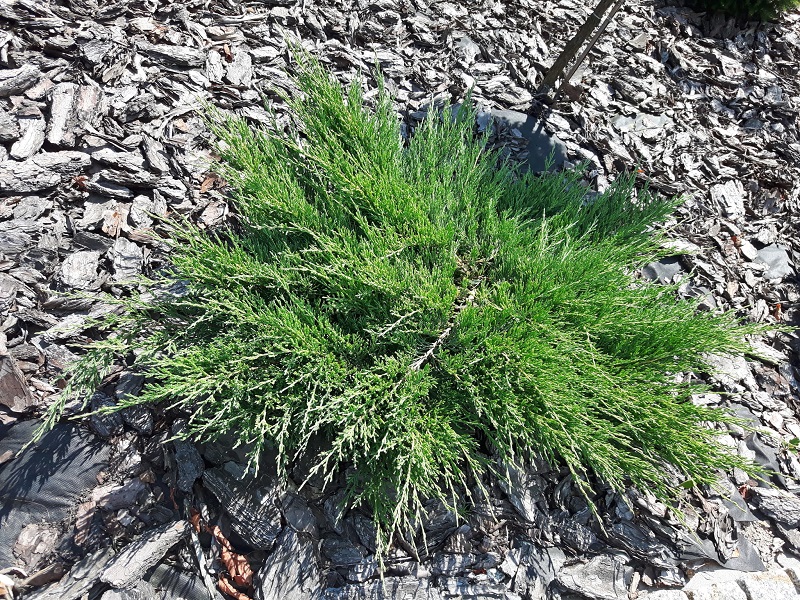
Rockspray cotoneaster (Cotoneaster procumbens)
Der Rockspray cotoneaster gehört zu den sogenannten Bodendeckern, die nicht höher als 15 cm werden. Er zeichnet sich durch eine reiche Blüte aus, die zwischen Ende Mai und Anfang Juni stattfindet. Gleich danach erscheinen runde Früchte an den Zweigen. Rockspray cotoneaster ist eine universelle Pflanze. Man kann ihn z. B. verwenden, um bestimmte Teile des Gartens voneinander abzugrenzen.

Rote immergrüne Sträucher
Möchten Sie etwas Einzigartiges in Ihrem Garten haben? Wählen Sie rote Sträucher, die auch im Winter gut aussehen - sie sind sehr beeindruckend. Solche Pflanzen ändern ihre Farbe normalerweise im Herbst. Das ist ein weiterer Vorteil, denn so sieht Ihr Garten zu jeder Jahreszeit anders aus.
Hochland-Dornröschen (Leucothoe fontanesiana)
Der Hochland-Hahnenfuß ist ein wunderschöner immergrüner Strauch, der mit seinen Blütentrauben verblüfft. Die kleinen Blüten ähneln Glocken. Die Pflanze hat charakteristische rotgerandete Blätter. Sie färben sich im Herbst vollständig rot. Die Pflanze wird nicht hoch. Normalerweise erreicht sie eine Höhe von 50-60 cm (1,64-1,97 ft).
Was die Ansprüche betrifft, so gedeiht der Hochland-Habichtskraut am besten in sonnigen Lagen und auf sauren, humusreichen Böden. Die Pflanze mag mäßige Feuchtigkeit.
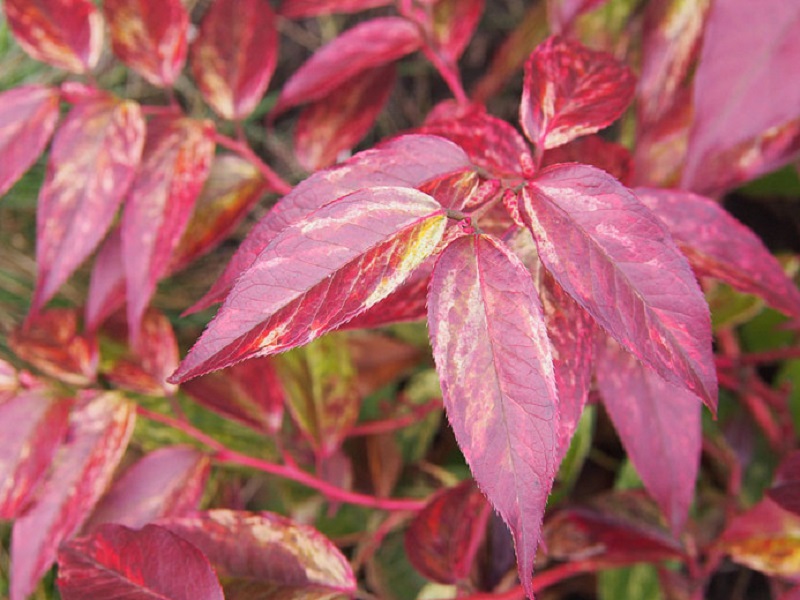
Berberitze (Berberis L.)
Die Berberitze ist eine Pflanze mit vielen Sorten, so dass ihr Aussehen unterschiedlich sein kann. Aber sie hat charakteristische rote Blätter an ihren Zweigen und entwickelt schöne Blüten. Aus ihnen entwickeln sich Früchte, die für Marmeladen und andere Konserven verwendet werden können.
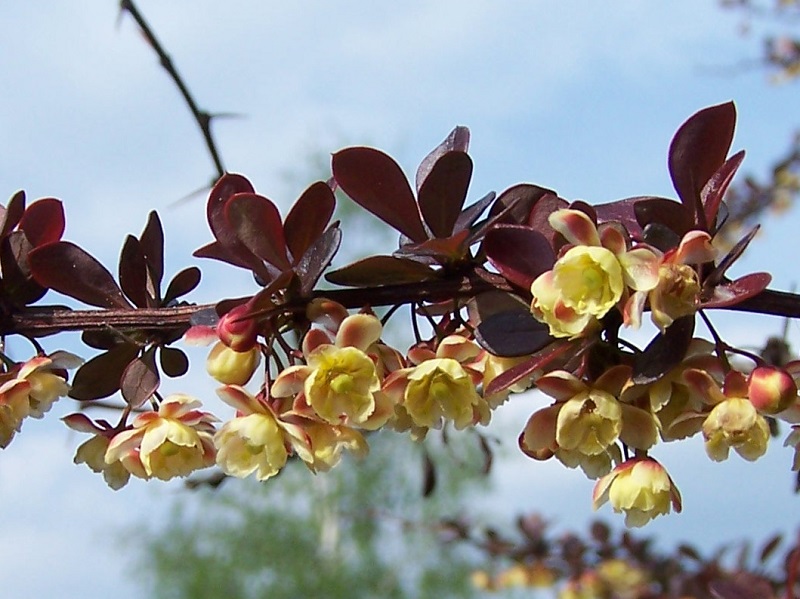
📍 Welche sind die besten immergrünen Sträucher für den Garten?
Immergrüne Sträucher ist ein Name, der eine große Vielfalt von Pflanzen beschreibt. Sie können zwischen blättrigen, nadeligen, blühenden, kriechenden und bunten Arten wählen. Sträucher mit roten Blättern sind sehr beliebt, da sie eine schöne Gartendekoration darstellen. Bei der Auswahl eines immergrünen Strauchs sollten Sie Ihre eigenen Vorlieben, die Bedürfnisse der Pflanzen und die Größe Ihres Gartens berücksichtigen.
📍 Wann sollte man immergrüne Sträucher pflanzen?
Jeder immergrüne Strauch hat andere Anforderungen an den Zeitpunkt der Pflanzung. Die meisten von ihnen können im Frühjahr oder Herbst gepflanzt werden. Informieren Sie sich aber unbedingt über die Bedürfnisse einer bestimmten Pflanze, die Sie interessiert, und planen Sie entsprechend.
📍 Wann sollten immergrüne Sträucher verpflanzt werden?
Unabhängig davon, für welche immergrünen Sträucher Sie sich entscheiden, ist der Spätherbst die beste Zeit, um sie zu verpflanzen. Dann haben sie ihre Blütezeit beendet und können im Frühjahr an einem neuen Ort wiedergeboren werden. Einige Arten werden im Frühjahr umgepflanzt. Informieren Sie sich daher über die Bedürfnisse der jeweiligen Pflanze.
📍 Wann schneidet man immergrüne Sträucher?
Einige immergrüne Sträucher müssen überhaupt nicht geschnitten werden - vor allem kurze Pflanzen. Wenn Sie aber größere Sträucher in Ihrem Garten haben und ihnen eine besondere Form geben wollen, ist die Zeit vor der Vegetationsperiode die beste Zeit für den Rückschnitt. So hat die Pflanze Zeit, sich zu regenerieren und sich in neuer, frischer Form zu entwickeln.
Empfohlene Artikel




